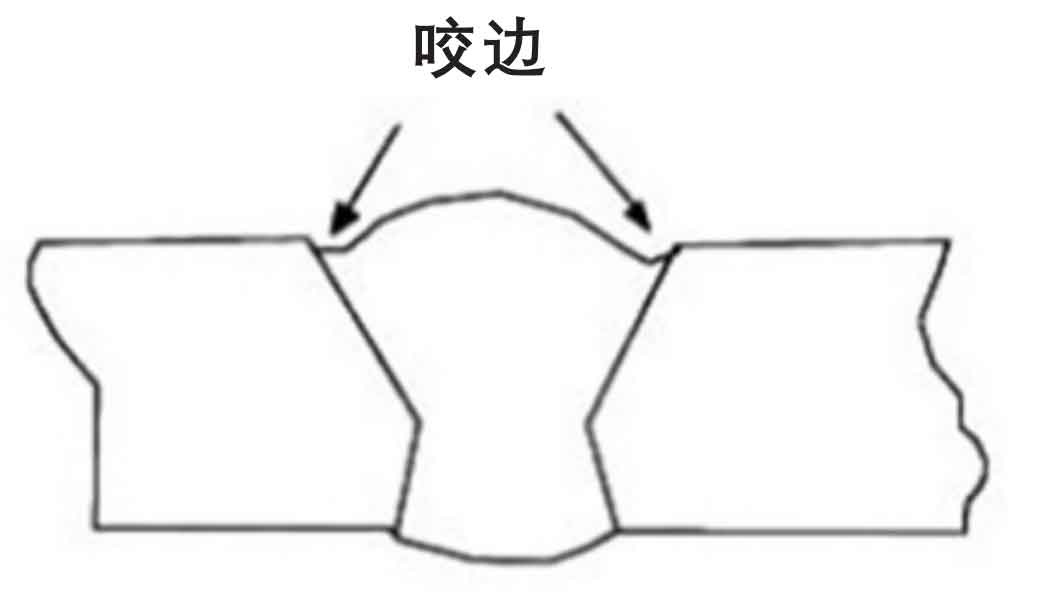Step-by-Step Guide to Preventing Weld Undercut in Different Metals
Step-by-Step Guide to Preventing Weld Undercut in Different Metals
Blog Article
Mastering the Art of Welding: Exactly How to Avoid Undercut Welding Issues for Flawless Construction Outcomes
Efficiency and precision are extremely important worldwide of welding, where also the slightest flaw can endanger the architectural integrity of a produced item. One common difficulty that welders face is damaging, an issue that can weaken a weld joint and lead to costly rework. By comprehending the origin of undercut welding and executing efficient strategies to stop it, welders can elevate their craft to brand-new degrees of excellence (Preventing weld undercut). In the quest of remarkable fabrication results, grasping the art of welding to prevent undercut concerns is not simply an ability but a necessity for those pursuing excellence in their job.
Recognizing Undercut Welding

To avoid undercut welding, welders should make certain correct welding specifications, such as readjusting the present, voltage, traveling speed, and preserving the proper electrode angle. Additionally, making use of the appropriate welding method for the details joint configuration is crucial. Employing weaving movements or backstepping strategies can help make sure correct weld metal deposition and decrease the chance of undercut development. Regular assessment of welds throughout and after the welding process is likewise vital to capture any undercut early and make needed changes to avoid additional flaws. Preventing weld undercut. By recognizing the reasons of undercut welding and implementing safety nets, welders can attain high-quality, structurally sound welds.
Sources Of Undercut in Welding
Recognizing the variables that add to damage in welding is necessary for welders to create top notch, structurally audio welds. When the weld metal does not correctly fill the groove created in between the base metal and the previously transferred weld steel, damaging happens. A number of aspects can cause undercut in welding. One usual reason is too much warm input. Welding at heats for extended periods can result in the base steel thawing more than desired, bring about damage. Insufficient welding inaccurate or current welding rate can likewise add to damage. Insufficient current might not supply enough warmth to melt the base and filler steels appropriately, while extreme rate can stop proper blend, triggering undercut. In addition, incorrect electrode angles or incorrect lantern manipulation strategies can create locations of low weld metal deposition, advertising undercut. Comprehending these reasons and carrying out proper welding methods can aid stop damaging issues, making certain resilient and solid welds.
Methods to stop Undercutting

To reduce the danger more info here of damaging in welding, welders can use critical welding strategies focused on improving the top quality and integrity of the weld joints. One reliable approach is to readjust the welding parameters, such as voltage, present, and travel speed, to guarantee appropriate warm input and deposition. Keeping an ideal electrode angle and making certain regular traveling rate can additionally help prevent undercut. Additionally, using the appropriate welding technique for the particular joint setup, such as weave or stringer beads, can contribute to decreasing undercutting. Preventing weld undercut.
Using back-step welding techniques and managing the weld bead profile can also aid distribute warm equally and reduce the threat of undercut. Regular assessment of the weld joint throughout and after welding, as well as executing top quality assurance procedures, can help in attending to and spotting damaging issues immediately.
Relevance of Proper Welding Specifications
Picking and keeping appropriate welding specifications is crucial for achieving successful welds with very little issues. Welding criteria refer to variables such as voltage, current, travel rate, electrode angle, and securing gas circulation price that directly impact the welding process. These specifications need to be meticulously readjusted based on the type of material pop over to this web-site being welded, its thickness, and the welding technique employed.
Proper welding specifications make sure the correct amount of warm is related to thaw the base steels and filler material consistently. If the specifications are set as well high, it can cause extreme warm input, triggering distortion, spatter, or burn-through. On the other hand, if the parameters are too reduced, insufficient combination, lack of penetration, or undercutting may take place.
Quality Control in Welding Workflow

Final Thought
Finally, mastering the art of welding calls for a thorough understanding of undercut welding, its reasons, and methods to stop it. By making certain appropriate welding specifications and implementing high quality assurance practices, perfect construction results can be accomplished. It is necessary for welders to regularly strive for excellence in their welding operations to stay clear of undercut concerns and create top quality welds.
Undercut welding, a typical defect in welding procedures, occurs when the weld metal does not correctly fill up the groove and leaves a groove or depression along the bonded joint.To prevent undercut welding, welders must guarantee correct welding parameters, such as changing the current, voltage, travel rate, her latest blog and maintaining the right electrode angle. Inadequate welding present or wrong welding rate can also add to damage.To reduce the danger of damaging in welding, welders can employ calculated welding strategies aimed at boosting the quality and stability of the weld joints.In verdict, mastering the art of welding needs a thorough understanding of undercut welding, its causes, and methods to stop it.
Report this page